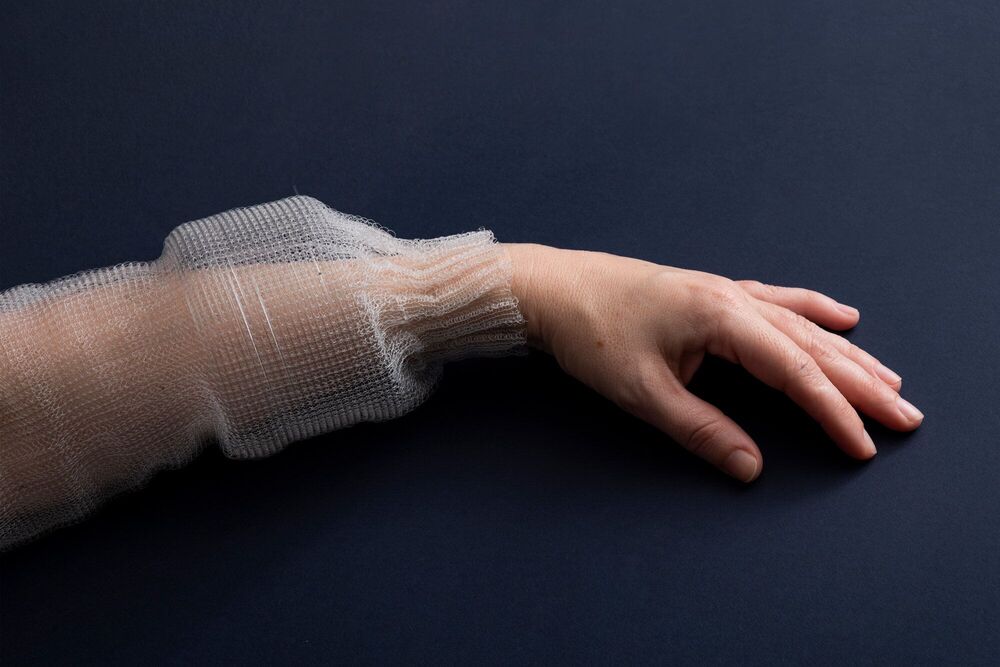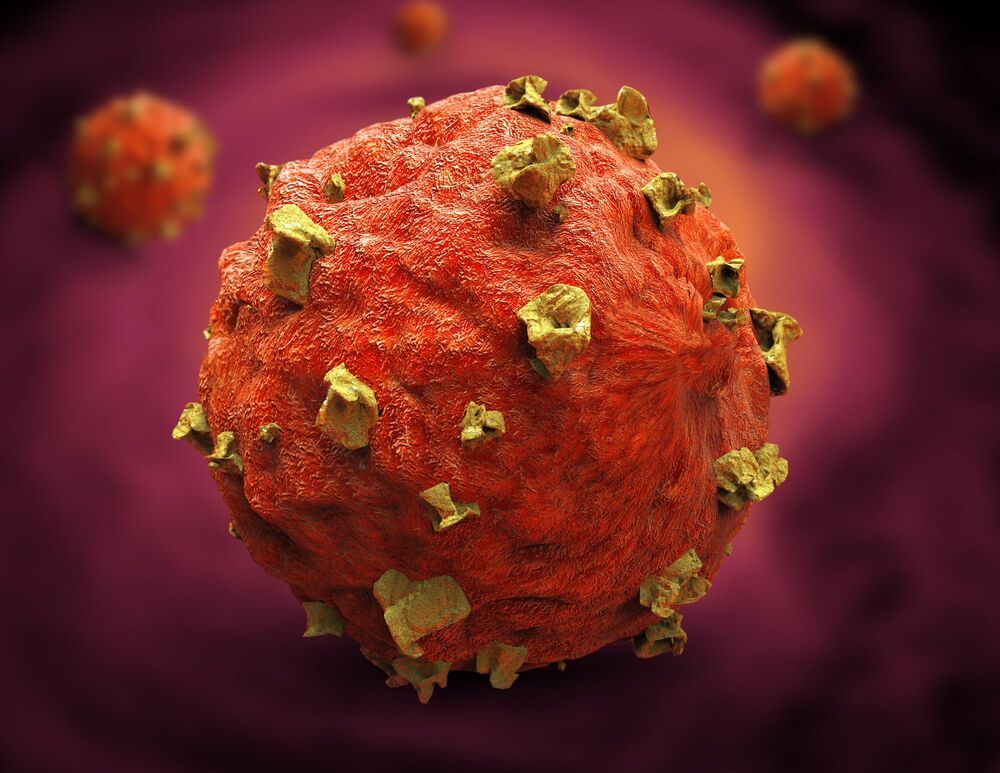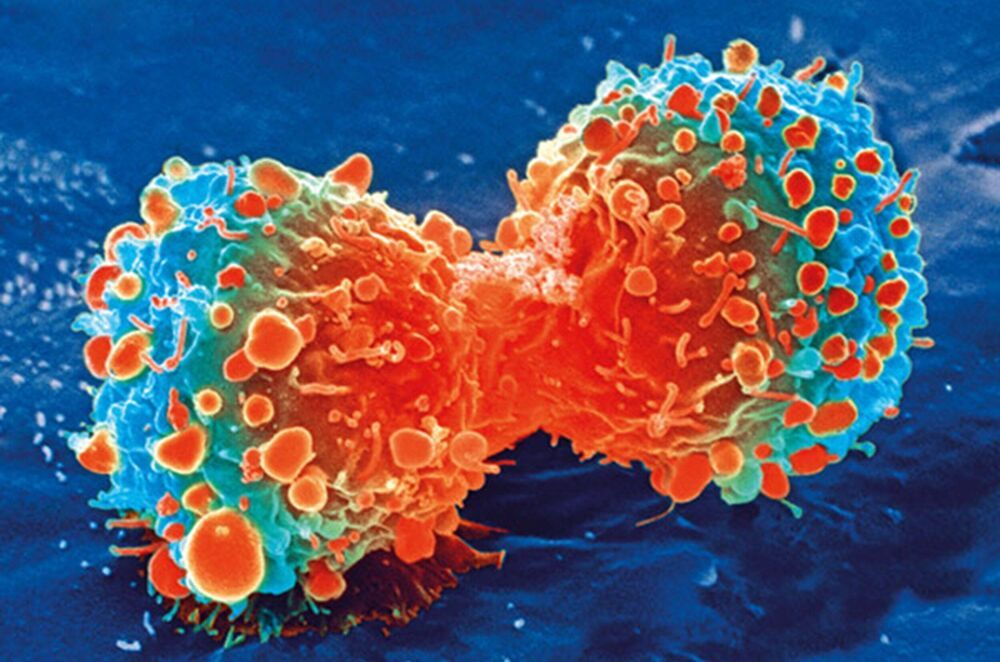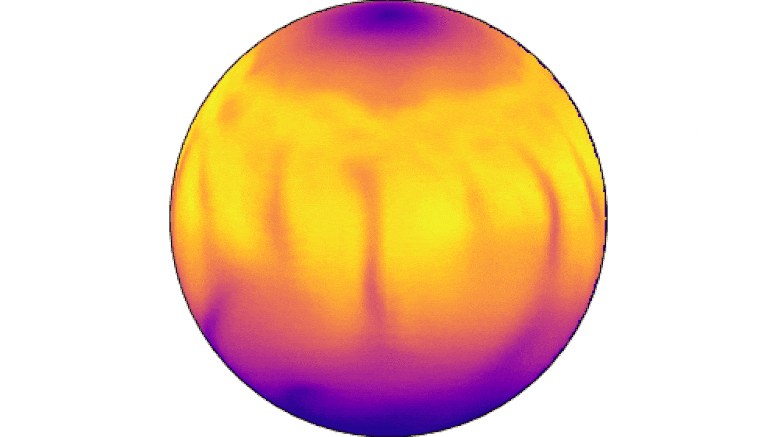MIT researchers have created the first fiber with digital capabilities, able to sense, store, analyze, and infer activity after being sewn into a shirt.


Amazon founder Jeff Bezos is officially stepping down from his role as the company’s CEO on July 5. CBSN tech reporter Dan Patterson joins CBSN to discuss the billionaire’s impact on the U.S. economy, politics and more.
CBSN is CBS News’ 24/7 digital streaming news service featuring live, anchored coverage available for free across all platforms. Launched in November 2014, the service is a premier destination for breaking news and original storytelling from the deep bench of CBS News correspondents and reporters. CBSN features the top stories of the day as well as deep dives into key issues facing the nation and the world. CBSN has also expanded to launch local news streaming services in major markets across the country. CBSN is currently available on CBSNews.com and the CBS News app across more than 20 platforms, as well as the Paramount+ subscription service.
Watch CBSN live: http://cbsn.ws/1PlLpZ7c
Download the CBS News app: http://cbsn.ws/1Xb1WC8
Follow CBS News on Instagram: https://www.instagram.com/cbsnews/
Like CBS News on Facebook: http://facebook.com/cbsnews
Follow CBS News on Twitter: http://twitter.com/cbsnews
Try Paramount+ free: https://bit.ly/2OiW1kZ
For video licensing inquiries, contact: [email protected]

New image made using NASA ’s Chandra X-Ray Observatory hints at previously unknown interstellar energy source at the Milky Way center.
New research by University of Massachusetts Amherst astronomer Daniel Wang reveals, with unprecedented clarity, details of violent phenomena in the center of our galaxy. The images, published recently in Monthly Notices of the Royal Astronomical Society, document an X-ray thread, G0.17–0.41, which hints at a previously unknown interstellar mechanism that may govern the energy flow and potentially the evolution of the Milky Way.
“The galaxy is like an ecosystem,” says Wang, a professor in UMass Amherst’s astronomy department, whose findings are a result of more than two decades of research. “We know the centers of galaxies are where the action is and play an enormous role in their evolution.” And yet, whatever has happened in the center of our own galaxy is hard to study, despite its relative proximity to Earth, because, as Wang explains, it is obscured by a dense fog of gas and dust. Researchers simply can’t see the center, even with an instrument as powerful as the famous Hubble Space Telescope. Wang, however, has used a different telescope, NASA’s Chandra X-Ray Observatory, which “sees” X-rays, rather than the rays of visible light that we perceive with our own eyes. These X-rays are capable of penetrating the obscuring fog — and the results are stunning.

The applications are for trademarks for the company’s ‘T’ logo design “and two other iterations of ‘Tesla’ stylised logo for use in the food industry”, the report said.
Moneycontrol could not independently verify the report.
As per the report, the three applications are for “restaurant services, pop-up restaurant services, self-service restaurant services, take-out restaurant services” and are filed under a trademark law provision indicating that Tesla intends to use, but has not done so yet.

This in turn led the team to an FDA-approved drug called Sirturo, which is used to treat tuberculosis and works by targeting this process in bacteria. In vivo animal experiments showed that the drug could target the fuel supply of these ultra-fit cancer cells and selectively create a “power failure” in them, while leaving healthy cells unharmed. This blocked 85 percent of metastasis in the animal experiments.
Leveraging a newfound ability to identify the “fittest” metastatic cancer cells, scientists at the UK’s University of Salford have discovered that an already approved drug can be deployed to cut off their fuel supply, while leaving normal healthy cells unharmed.
Metastatic cancer cells are dangerous, fast-moving cells cancer cells that have spread away from the primary site to other parts of the body where they can give rise to new tumors. These cells have often already survived chemotherapy and radiation treatments which makes tackling them difficult, though scientists continue to learn more about their behavior and how they might be targeted for better outcomes.
Research has shown that part of the reason these cells are able to resist treatments and spread throughout the body is because they are the fittest cancer cells, and therefore require relatively large amounts of energy. Building on this, the University of Salford scientists used an advanced biosensor to measure energy-carrying molecules in cells called ATP which, for the first time, enabled them to identify which of these cells are the “fittest.”
The team says that the technique could be used to develop new vaccines against antibiotic-resistant bacteria, and potentially even wipe out some dangerous strains in a similar way to how smallpox was eradicated.
Pathogens like bacteria and viruses are extremely good at evolving in response to drugs, which can render vaccines ineffective. But now, researchers at ETH Zurich have found a way to weaponize that ability against them, forcing the bugs down harmless evolutionary dead ends.
Microbes are living examples of evolution in action. Darwin’s classic theory says that when lifeforms are exposed to pressures from their environment, some of them will develop new genetic mutations that help them cope better. Since other individuals will be at a disadvantage, the mutations will eventually become the norm throughout a population.
In the world of bacteria and viruses, drugs and vaccines are the environmental pressures that they must overcome. And they do it with frustrating ease, quickly finding ways around the attacks and then swapping those genes like trading cards. The end result is the constant looming threat of antibiotic-resistant “superbugs” that render our best drugs ineffective.

The published results indicate several possible methods of preventing metastasis: immunotherapy based on interleukin-15, which increases the number of natural killer cells in the tissue; interferon gamma therapy, which maintains the dormant state of the cancer cells; and inhibitors of the mechanism through which the hepatic stellate cells paralyze the natural killer cells. Appropriate therapies already exist for all these approaches, but they still need to be clinically tested.
Metastases can develop in the body even years after apparently successful cancer treatment. They originate from cancer cells that migrated from the original tumor to other organs, and which can lie there inactive for a considerable time. Researchers have now discovered how these “sleeping cells” are kept dormant and how they wake up and form fatal metastases. They have reported their findings in the journal Nature.
A tumor can leave behind an ominous legacy in the body: cancer cells can migrate from the tumor to other tissues in the body, where they survive after treatment in a kind of hibernation called dormancy. Currently, cancer medicine relies on monitoring cancer patients after their initial treatment in order to detect the awakening of these cells to form metastases. One of the biggest questions in cancer research is what exactly causes this transition.
“This dormancy period offers an important therapeutic window in which the number of cancer cells and their heterogeneity are still manageable,” says Professor Mohamed Bentires-Alj, group leader at the Department of Biomedicine at the University of Basel and University Hospital Basel. “Understanding the cellular and molecular mechanisms underlying tumor dormancy is therefore crucial to preventing the recurrence of cancer.” His team has made an important step in this direction.

Family sedan breaks speed record.
The new Tesla Model S Plaid has reportedly achieved a new quarter-mile world record with a 9.2-second run, according to Jay Leno, who was at the racetrack for the record attempt.
After several months of delays, Tesla is apparently finally going to start deliveries of the new and updated Model S next week, including the new top performance Plaid version.
The automaker announced some impressive specs with 390 miles of range, 200 mph top speed, and 1.99 second 0–60 mph acceleration.
Elon Musk plans to unveil a spaceport in the ocean. Here’s what you need to know.

New research is helping to explain one of the big questions that has perplexed astrophysicists for the past 30 years — what causes the changing brightness of distant stars called magnetars.
Magnetars were formed from stellar explosions or supernova e and they have extremely strong magnetic field s, estimated to be around 100 million, million times greater than the magnetic field found on earth.
The magnetic field on each magnetar generates intense heat and x-rays. It is so strong it affects the physical properties of matter, most notably the way that heat is co nducted through the crust of the star and across its surface, creating the variations in brightness which has puzzled astrophysicists and astronomers.